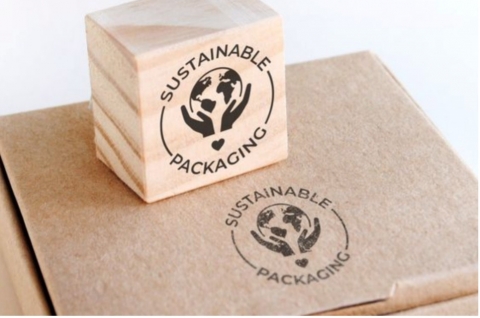What is sustainable packaging?
Posted: 7 February 2022
Packaging plays a great role in protecting the environmental and economical investment in products. It also aids in economic development and social well-being through distribution and of products to the marketplace.
However, after its usage packaging is claimed to contribute to huge amount of municipal solid waste. A sustainable, intelligent packaging and system design could therefore reduce the negative impact of packaging on the environment and society.
Sustainability is often associated with looking at the whole picture or “zooming out” and making sure that a product’s impact is minimized. There is no simple and direct answer for which packaging is sustainable or not. Rather, it is important to assess a packaging product comprehensively and consider its whole life cycle.

According to the Sustainable Packaging Coalition (SPC), sustainable packaging can be defined as the one which fulfils the following criteria:
-
Is beneficial, safe & healthy for individuals and communities throughout its life cycle
> Simplified to- Environmental and social impact on individuals
-
Is sourced, manufactured, transported, and recycled using renewable energy
> Use of Renewable energy
-
Optimizes the use of renewable or recycled source materials
> Renewable and recycled materials use
-
Is manufactured using clean production technologies and best practices
> Cleaner production and best practice
-
Is made from materials healthy throughout the life cycle
> Impact on Biosphere/environment
-
Is physically designed to optimize materials and energy
> Optimized design
-
Is effectively recovered and utilized in biological and/or industrial closed loop cycles
> Responsible end-of-life
Further, we can look deeper into these criteria:
1) Environmental and social impact on individuals
As part of globalization strategies, multinational companies have expanded operations overseas and are increasingly being held accountable for actions resulting in negative social or environmental consequences.
The packaging’s supply chain should be assessed for its environmental and social impact such as use of carcinogenic substances, radioactive emissions, worker’s rights etc.
What to ask the supplier?
- LCA including the impacts on human health
- Audits, certifications and/or declaration of good working conditions
- FSC certification or similar for protection of rights of indigenous communities
- Declaration of not using REACH-listed chemicals
2) Use of Renewable energy
It is a well-known fact that fossil fuels are an unsustainable source of energy which also cause more carbon emissions. Therefore, shifting to cleaner and renewable fuels is an important part of implementation of sustainability in packaging. Though this change will largely depend on local availability of a reliable supply of renewable energy and national energy policies, a transition to renewable energy is vitally important in those regions that are heavily dependent on fossil energy.
What to ask the supplier?
- Information on type of energy used for the production and across the supply chain
3) Renewable and recycled materials use
The use of recycled or bio-based and renewable materials from well-managed sources can ensure the availability of materials for future generations and also prevent harmful chemicals and microplastics affecting the environment. Use of recycled materials contributes to circular economy and helps in conservation of resources.
What to ask the supplier?
- Content (percentage) of renewable, recycled or waste material content in the Packaging.
4) Cleaner production and best practice
Clean production comprises of increasing the overall efficiency of processes and technologies and reduction of risks to humans and the environment. Ensuring that production processes meet clean production best practice standards is fundamental to linking manufacturing performance to sustainable packaging.
What to ask the supplier?
- Certifications and/or audits for use of efficient and best technologies in production
5) Impact on Biosphere/environment
Elimination of harmful gases and substances, such as methane and CO2 emissions resulting in climate change is an important part of making a packaging sustainable. Also, it is important to be aware of eutrophication, acidification and photochemical ozone creation potential from different materials.
What to ask the supplier?
- LCA including carbon footprint, impact on water, air and land
6) Optimized design
Sustainable design for packaging comprises of choosing an eco-friendly and relevant material for the purpose and a clear understanding of performance requirements The energy use over the life of the package, consumer behavior, and designing of packaging to enable recycling and recovery also need to be taken into account. For packaging, some of the important aspects to consider for higher efficiency in recycling is glue, ink, material mix and separability.
What to ask the supplier?
- Is there any empty space in the packaging that can be eliminated?
- Is there any extra material than required in the packaging that can be eliminated?
-
Does the packaging enable recyclability?
- Is the ink and glue fitted for the recycling process?
- Are the different materials easy to separate?
7) Responsible end-of-life
Presently, availability of proper technologies and infrastructure for enabling a responsible end-of-life of a product are under development and acts as a challenge. Thus, it is crucial to make sure that the packaging is fit for reuse, recycling and recovery in the targeted markets.
What to ask the supplier?
- Is the material recyclable in existing recycling streams?
- In case the material is not recyclable, is it biodegradable?